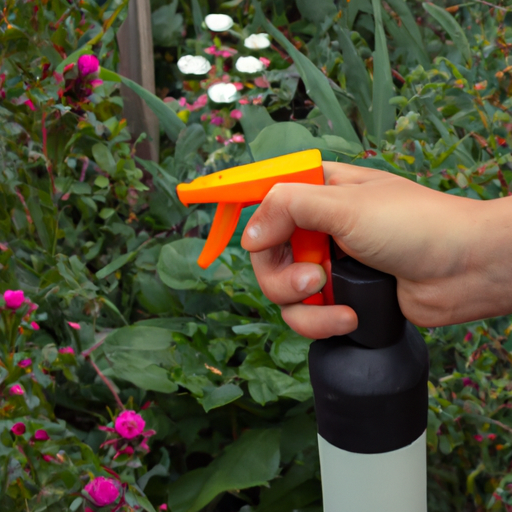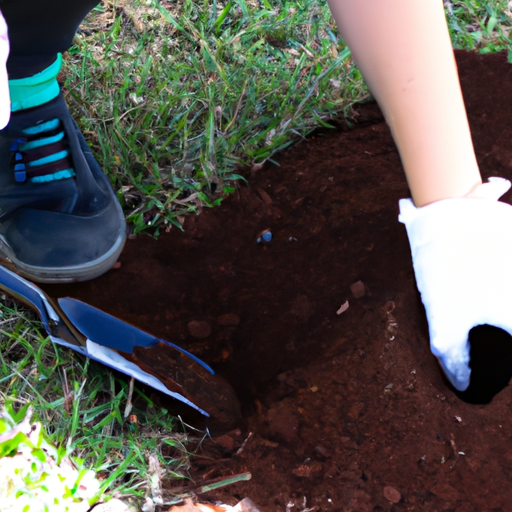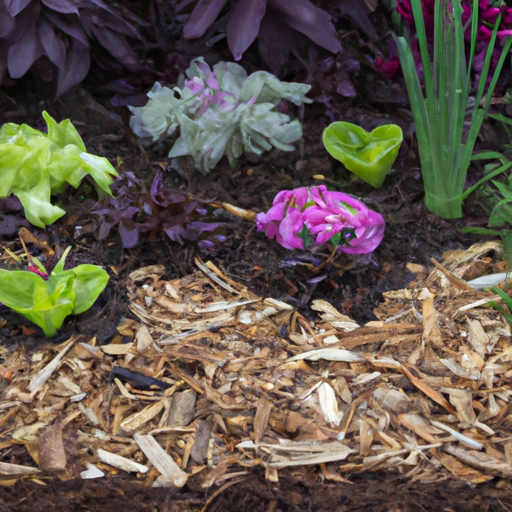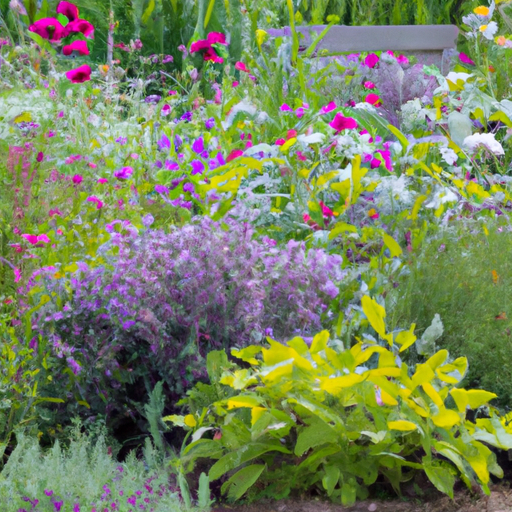Hey there fellow gardeners!
Are you struggling to keep your small garden producing healthy crops year after year? Well, one of the best ways to ensure a bountiful harvest is by practicing crop rotation.
Not only does this method help prevent soil-borne diseases and pests from building up in your garden beds, but it also helps replenish nutrients that certain plants deplete from the soil.
But where do you start when planning a crop rotation for a small garden? There are many factors to consider such as plant families, spacing requirements, and growing seasons.
In this article, we’ll explore some tips for planning an effective crop rotation in small gardens so you can maximize your yields and maintain healthy soil for years to come.
So grab your gardening gloves and let’s get started!
Understanding The Benefits Of Crop Rotation
Understanding the benefits of crop rotation is crucial for any small garden owner.
Crop rotation involves planting different types of crops in a specific order each growing season to improve soil health and manage pests and diseases effectively.
The practice helps break pest cycles, which reduces their numbers in the garden over time, leading to healthier plants.
Moreover, rotating crops improves soil fertility by introducing different nutrients into the soil that are essential for healthy plant growth.
By implementing crop rotation, you can avoid depleting your soil’s resources and ensure that it remains fertile year after year.
Identifying Plant Families And Their Needs
Identifying plant families and their needs is crucial when planning crop rotation in small gardens.
Companion planting, which involves growing different plants together to benefit each other, can be a useful tool for maximizing soil health and preventing pests and diseases.
However, it’s important to know which plants are compatible with each other based on their family relationships.
For example, members of the nightshade family (such as tomatoes, peppers, and eggplants) should not follow each other in the same bed because they are susceptible to similar pests and diseases.
On the other hand, legumes (like peas and beans) are great for improving soil health because they fix nitrogen in the soil.
By understanding these relationships between plant families, you can create a more effective crop rotation plan that promotes optimal growth and yields while minimizing problems with pests and disease.
Mapping Out Your Garden Space
Now that we have identified the plant families and their needs, let’s map out our garden space for effective crop rotation.
Think of your garden layout as a canvas waiting to be painted with vibrant colors of various plants.
As a Master Gardener, it is crucial to optimize every inch of your small garden by planning ahead for the next growing season.
One way to maximize space is through proper crop rotation, which involves planting different crops in different areas each year to avoid soil depletion and pest buildup.
Take time to study the sunlight patterns, shade zones, and microclimates in your garden before mapping out where each crop will go.
Consider companion planting techniques as well to further increase yields while reducing pests and diseases.
With careful planning and attention to detail, you can create a thriving garden full of healthy plants ready for harvest all season long!
Choosing The Right Crops For Your Rotation
Choosing the right crops for your rotation is crucial to maintaining soil health and maximizing yields.
Companion planting can be a helpful technique when selecting which crops to rotate, as certain plants have beneficial relationships with one another that help improve soil fertility and ward off pests.
For example, legumes like beans and peas are known to fix nitrogen in the soil, making them great choices to plant before heavy feeders like tomatoes or corn.
Additionally, it’s important to consider the specific nutrient needs of each crop when planning your rotation, so you can avoid depleting the soil of certain nutrients over time.
By carefully choosing your crop sequence and incorporating companion planting techniques, you can ensure a healthy garden ecosystem that produces bountiful harvests year after year.
Implementing And Adjusting Your Plan For Success
Now that you have your crop rotation plan in place, it’s time to implement and adjust as needed for success.
One important aspect of implementing the plan is staying on schedule. Keep a calendar or planner handy so you can track planting dates and move things around if necessary due to weather or other factors.
Adjusting the schedule may also be necessary if certain crops are not performing well or if unexpected issues arise.
Additionally, dealing with soil issues should be a key part of your implementation process. Consider using cover crops to improve soil health and fertility, and test your soil regularly to ensure optimal growing conditions.
By keeping an eye on your garden’s progress and making adjustments when needed, you’ll be able to enjoy a successful harvest year after year.
Frequently Asked Questions
How Long Should I Wait Before Planting The Same Crop In The Same Spot?
Ah, the age-old question of how long to wait before planting the same crop in the same spot. This is a crucial aspect of crop rotation and one that must not be taken lightly.
Crop rotation benefits are many – it helps maintain soil fertility, reduces pest and disease pressure, and promotes biodiversity – but there are also challenges involved, such as keeping track of which crops were grown where and when.
As a Master Gardener, my advice would be to aim for at least two years between growing the same crop in the same spot. However, this can vary depending on factors like your soil type, climate conditions, and what other crops you plan to rotate with it.
It’s also important to note that some plants have longer or shorter life cycles than others, so take this into account when planning your rotations.
Overall, patience is key when it comes to successful crop rotation – taking the time to carefully plan out your garden layout will pay off in healthier plants and better yields down the line.
Can I Rotate Crops Between Different Garden Beds?
Yes, rotating crops between different garden beds is an effective way to maintain soil health and prevent disease buildup.
Interplanting techniques and companion planting strategies can also be incorporated into your crop rotation plan for optimal results.
By alternating plant families in each bed or incorporating cover crops, you can improve soil fertility and reduce the risk of pests and diseases taking hold.
As a Master Gardener, I highly recommend experimenting with different crop rotations and interplanting methods to find what works best for your small garden.
Should I Include Cover Crops In My Crop Rotation Plan?
When planning crop rotation, it’s important to consider the benefits and drawbacks of including cover crops in your plan.
Cover crops can improve soil health by adding organic matter and fixing nitrogen, but they also require space and time to grow.
Popular cover crop options include clover, rye, and buckwheat.
It’s important to choose a cover crop that fits with your garden’s needs and schedule.
Overall, incorporating cover crops into your crop rotation plan can be beneficial for small gardens if done correctly.
What Should I Do If I Have Limited Space And Cannot Rotate Crops As Recommended?
Oh, dear gardener. Limited space and crop rotation woes? Fear not!
As a Master Gardener, I suggest you explore the world of companion planting. Choose plants that complement each other in growth habits and nutrient needs to maximize your small garden’s potential.
Container gardening can also be your friend here – group plantings with similar requirements together in pots or raised beds for easy movement and organization.
Let’s get creative with our limited space limitations and turn them into opportunities for bountiful harvests!
Can I Still Use Fertilizers And Pesticides In A Crop Rotation Plan?
Yes, you can still use fertilizers and pesticides in a crop rotation plan. However, as a Master Gardener, I would recommend exploring alternatives to chemical inputs for the health of your soil.
Chemical fertilizers and pesticides can harm beneficial microorganisms that play a crucial role in maintaining soil health. Instead, consider using organic options such as compost or natural pest control methods like companion planting.
Proper crop rotation itself is also essential for soil health as it helps prevent nutrient depletion and disease buildup. So while incorporating some chemicals may be necessary at times, prioritizing soil health through alternative methods should always remain top of mind when planning your crop rotation.
Conclusion
In conclusion, planning crop rotation in small gardens can be a daunting task but it is definitely worth the effort. By rotating crops, you not only improve soil quality and reduce pest problems but also increase yields.
Did you know that according to a study conducted by the University of California, crop rotation can increase yields by up to 20%? This means that if you plan your crop rotations correctly, you could potentially produce more food for your family or even sell some at local markets.
As a Master Gardener, I highly recommend incorporating cover crops into your rotation plan as they provide numerous benefits such as nitrogen fixation and weed suppression.
Additionally, if space is limited, consider intercropping different plants together or using containers to grow multiple crops in one area.
Remember to avoid planting the same family of crops in the same spot year after year and always prioritize improving soil health through organic fertilizers and natural pest control methods.
Happy gardening!






